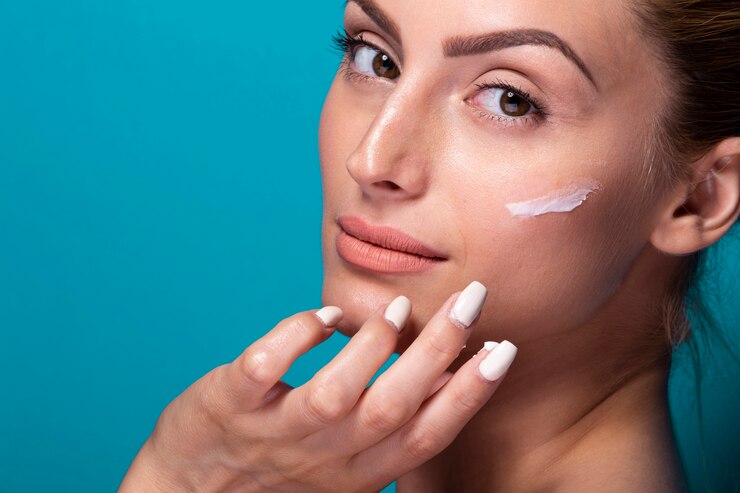Introduction
In skincare, serums and moisturizers often get confused, but they have distinct roles. While both are essential in promoting healthy skin, they target different concerns and function differently. This guide will help you understand the difference between serums and moisturizers and how to use them effectively for optimal skin results.
Difference in Serum vs. Moisturizer
|
Aspect |
Serum |
Moisturizer |
|
Texture |
Lightweight, thin consistency |
Thicker, creamier consistency |
|
Main Purpose |
Targets specific concerns (e.g., wrinkles, acne, pigmentation) |
Provides hydration and locks in moisture |
|
Active Ingredients |
High concentration of active ingredients (e.g., Vitamin C, retinol) |
Humectants, emollients, and occlusives for hydration |
|
Absorption |
Penetrates deeper into the skin |
Sits on the outer layer to create a moisture barrier |
|
Usage |
Used for treatment and repair |
Used for hydration and protection |
|
Skin Type |
Suitable for all skin types, especially for targeted concerns |
Suitable for all skin types, customized based on needs |
What Is Serum?
Ceramide serum is a skincare product designed with a high concentration of active ingredients to target specific skin concerns. Common ingredients in serums include Vitamin C, hyaluronic acid, and retinol. Serums are lightweight and penetrate deeply to treat issues like wrinkles, pigmentation, and acne, offering a targeted solution for specific skincare problems.
What Is Moisturizer?
water gel based moisturizer are formulated to hydrate and protect the skin. They come in different forms such as creams, gels, and lotions, suitable for various skin types. Moisturizers create a protective barrier on the skin, helping to retain moisture and prevent dehydration. They are ideal for maintaining skin hydration and overall health.
Can You Use Serums and Moisturizers Together?
Yes, serums and moisturizers can be used together. Serums and moisturizers complement each other: serums treat specific skin concerns with concentrated ingredients, while moisturizers lock in hydration and protect the skin. Using both ensures your skin gets the benefits of active treatment and lasting moisture.
Benefit of Serum and Moisturizer
-
Serum Benefits:
- Deep penetration into the skin layers
- Targeted treatment for specific concerns like aging, pigmentation, or acne
- Contains high concentrations of active ingredients for effective results
-
Moisturizer Benefits:
- Provides essential hydration
- Protects the skin by forming a barrier
- Prevents moisture loss, keeping skin supple and soft
Should You Use Face Serum or Moisturizer First?
Serums should always be applied first, followed by moisturizers. Serums are formulated to penetrate deeply into the skin and deliver concentrated active ingredients, while moisturizers help lock in these benefits and prevent moisture loss.
How to Layer Serums and Moisturizers
- Start with a clean, dry face.
- Apply toner or essence if part of your routine.
- Apply serum evenly across the face.
- Wait for the serum to fully absorb into the skin.
- Apply moisturizer to lock in hydration and active ingredients from the serum.
Should You Use Both Face Serum & Moisturizer?
In most cases, using both is recommended. Serums treat specific concerns, while moisturizers ensure that your skin stays hydrated and protected. However, in humid climates or for oily skin types, you may choose to use only one depending on your skin's needs.
How to Choose the Right Skin Products
- Serums: Look for ingredients that target your skin concerns, such as Vitamin C for brightening or hyaluronic acid for hydration.
- Moisturizers: Choose based on your skin type. For dry skin, pick a thicker cream; for oily skin, opt for lightweight, non-comedogenic options. Always check product labels for ingredients suitable for your skin and consider doing a patch test.
Improve Your Skincare Routine
Incorporating both a serum and a moisturizer can elevate your skincare routine, leading to better hydration and treatment of specific concerns. Use a Vitamin C serum in the morning for its antioxidant properties and a hydrating serum with a heavier moisturizer at night to repair the skin barrier.
Does Your Skin Also Need Moisturizer If You Use Serum?
Yes, even if you use a serum, you should still apply a moisturizer. Serums deliver concentrated ingredients, but moisturizers help to seal them in, ensuring that the skin remains hydrated and the benefits are maximized.
What’s the Best Way to Apply Both Serum and Moisturizer?
- Use gentle, upward strokes to apply both serum and moisturizer.
- Avoid excessive rubbing or tugging, as this can irritate the skin.
- Allow a few moments between applying serum and moisturizer to ensure the serum is fully absorbed.
FAQs
Q. Can oily skin types use serums and moisturizers together?
A. Yes, opt for lightweight, oil-free serums and moisturizers.
Q. How long should I wait between applying serum and moisturizer?
A. Wait about 1-2 minutes for the serum to absorb before applying moisturizer.
Q. Can I mix serums and moisturizers?
A. It’s better to apply them separately for maximum effectiveness.
Q. Which is better for anti-aging: serum or moisturizer?
Both are important: serums target specific concerns, and moisturizers keep the skin hydrated and plump.
Conclusion
Serums and moisturizers serve different yet complementary purposes in a skincare routine. While serums deliver active ingredients deep into the skin, moisturizers provide hydration and protection. By using both, you can address specific skin concerns and maintain healthy, glowing skin. Experiment with different combinations to find what works best for your skin type and needs.








